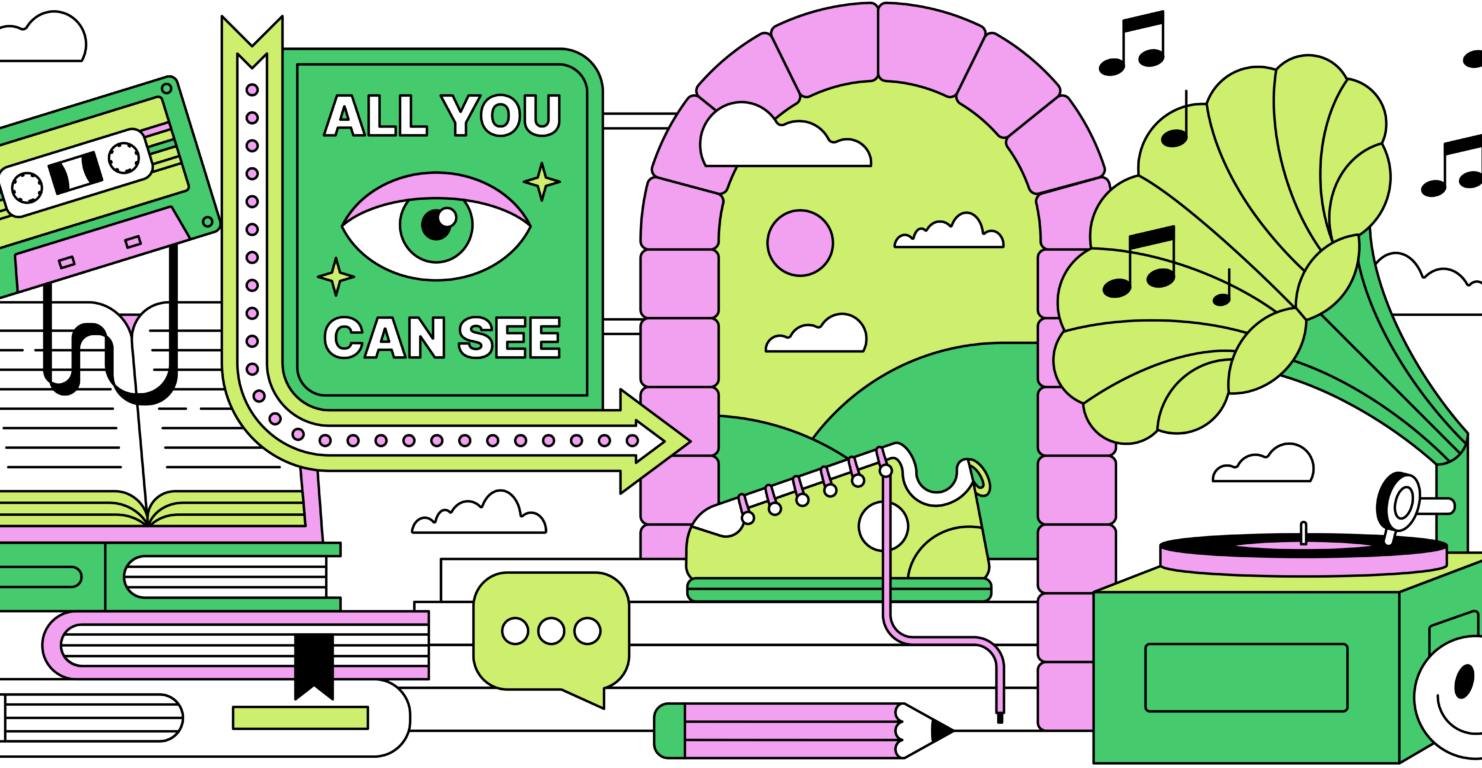Scroll Stoppers 3: Everything All at Once
Multitasking during downtime is nothing new. Flash back to family evenings around the fireplace, everyone engaging in their own hobby – drawing, reading, sewing – while the wireless plays in the background.
According to Inside Intelligence, these days we’re interacting with around 13 hours of content a day. And given that we’re also expected to work, eat, sweat, socialise, moisturise, go to therapy, and God knows what else – it seems our only option is to engage with multiple media at once.
We listen to podcasts as we scroll through social media, make online purchases during TV ad breaks, and seek out ambient playlists to help us focus while we work. (Am I listening to Spotify’s Period Drama Soundtracks while I write this? You’ll never know.)
But as opposed to a constant need for stimulation, our research suggests this behaviour is a coping strategy. Thanks to a significant increase in remote and hybrid working, we’re getting increasingly good at finding what works for us in a variety of settings.
And quite often that means creating the perfect amount of background noise or visual stimulation to recreate a traditional office environment.
“Podcasts were really important when I was working from home, because I was alone most of the time and it felt like company.” (Interviewee)
Perhaps this is also why we see audiences returning to the same comfort programs – Friends, The Office, Parks and Recreation –which provide a sense of safety and nostalgia akin to social connection.
Alongside new multimedia-tasking habits, our research also highlights changes in the ways we interact with our favourite mediums.
“I live in an open plan kitchen and living space, and subtitles allow people to comfortably be focused on the television while there are other things going on.” (Interviewee)
The use of subtitles and CC captions while watching TV and films came up a lot in our conversations, and it seems their role is two-fold. Either the programs are muted and purely functioning as a backdrop, or our distraction-prone brains are now reliant on subtitles and captions to ensure we stay fully immersed in whatever’s on screen.
As of 2022, podcast listeners as a group have grown 29.5% in the last three years, according to Podcast Statistics and Data, December 2022, from Buzzsprout.
“There is this question of senses. Working from home wreaks havoc with the eyes, so I moved to listening to content more, shifting senses from visual to listening.” (Interviewee)
Takeaway
Your content is battling for the attention of audiences who are constantly switching between different sources of media. Think about how your content works for partial or ambient attention.
● To optimise attention, audiences scan newsletters and articles. Think about how you format your content to work for scannable reading.
● Audiences are listening to more audio. Is there a place for audio in your content strategy? Think about what people might be doing when they are listening.
● Tell your audiences up front that the content might be something they want to bookmark for later when they can give it more attention.

